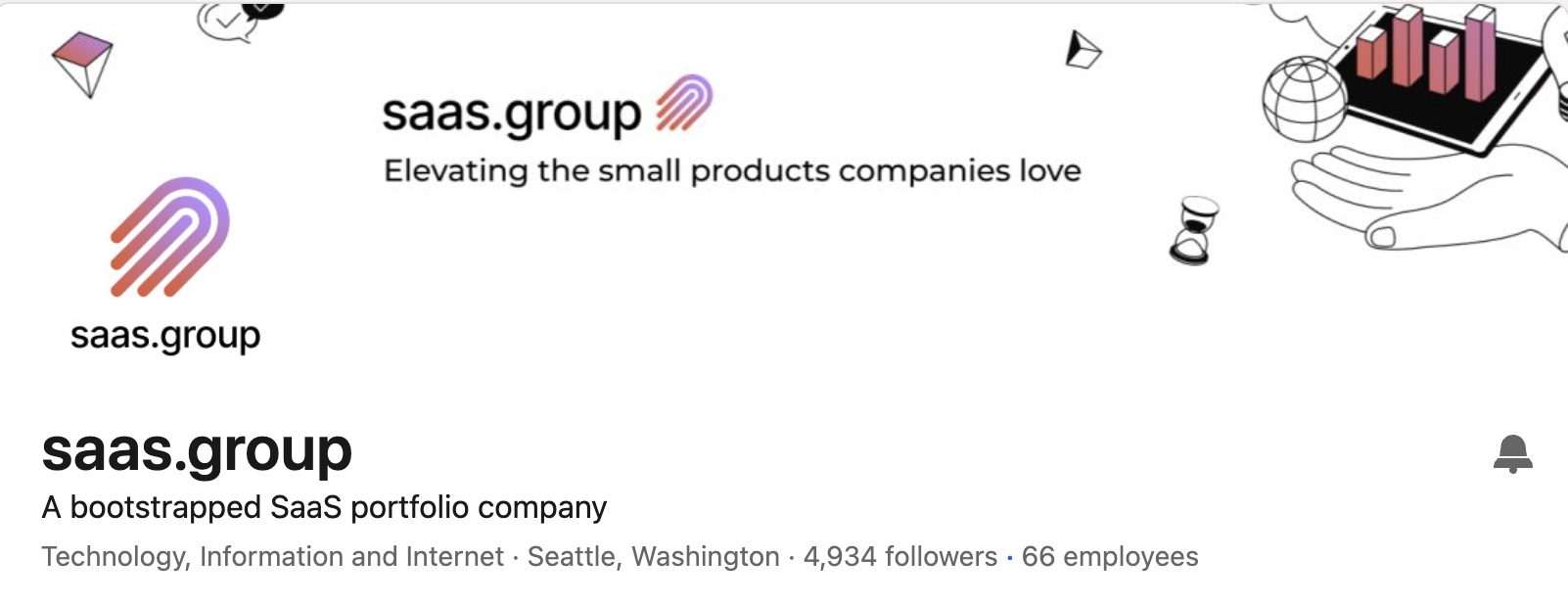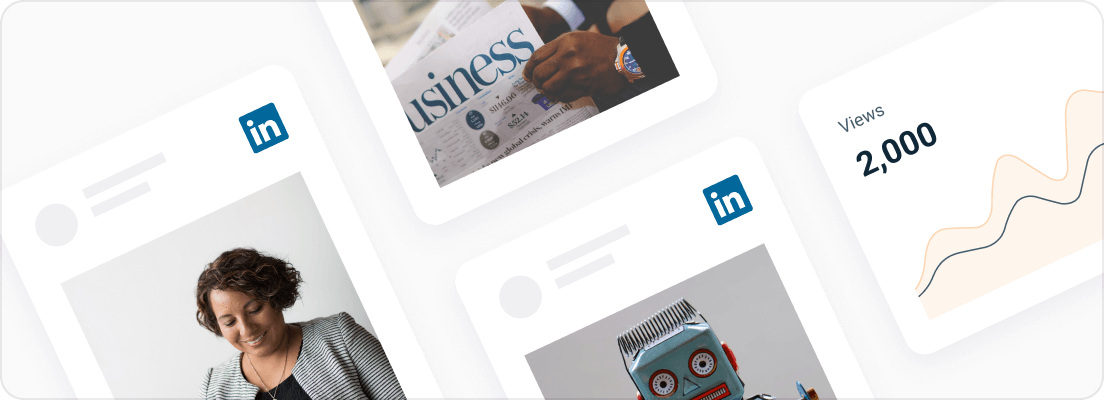LinkedIn is the most effective social platform for B2B companies, but it is also the most difficult nut to crack. Most companies struggle with understanding the algorithm and attracting substantial visibility and engagement to their content.
If sharing content on LinkedIn feels like fetching water with a basket, this article is for you. We’ll show you how to improve your page’s organic visibility, engage your audience with your content, and grow your page.
1. Optimize Your LinkedIn Page for Optimum Visibility
Picture this: you’re looking up two competing companies on LinkedIn. Company A has a complete About Us page with a banner image and logo. Company B, on the other hand, only has its name and website on the profile page. Which one will you deem professional? Definitely the first.
An optimized LinkedIn profile strengthens your brand image. It creates a positive impression in the minds of your target audience — especially for the people who are encountering your organization for the first time. It helps you win their trust.
The algorithm rewards you, too. An updated company profile is more likely to receive traction — such as appearing in search and feeds than the unoptimized ones.
LinkedIn optimization is an ongoing process but there are basics you need to get right early.
A. Add your logo and clear background image for quick visual recognition. Here’s an example from Juicer:

B. Complete the “About” section. Fill out your company description, founding information, website, location, and the like. Add relevant keywords to the specialties section and company description naturally to boost your page’s organic visibility.
For example, we use product keywords like Instagram aggregator and social media embed in the specialties section of our page.
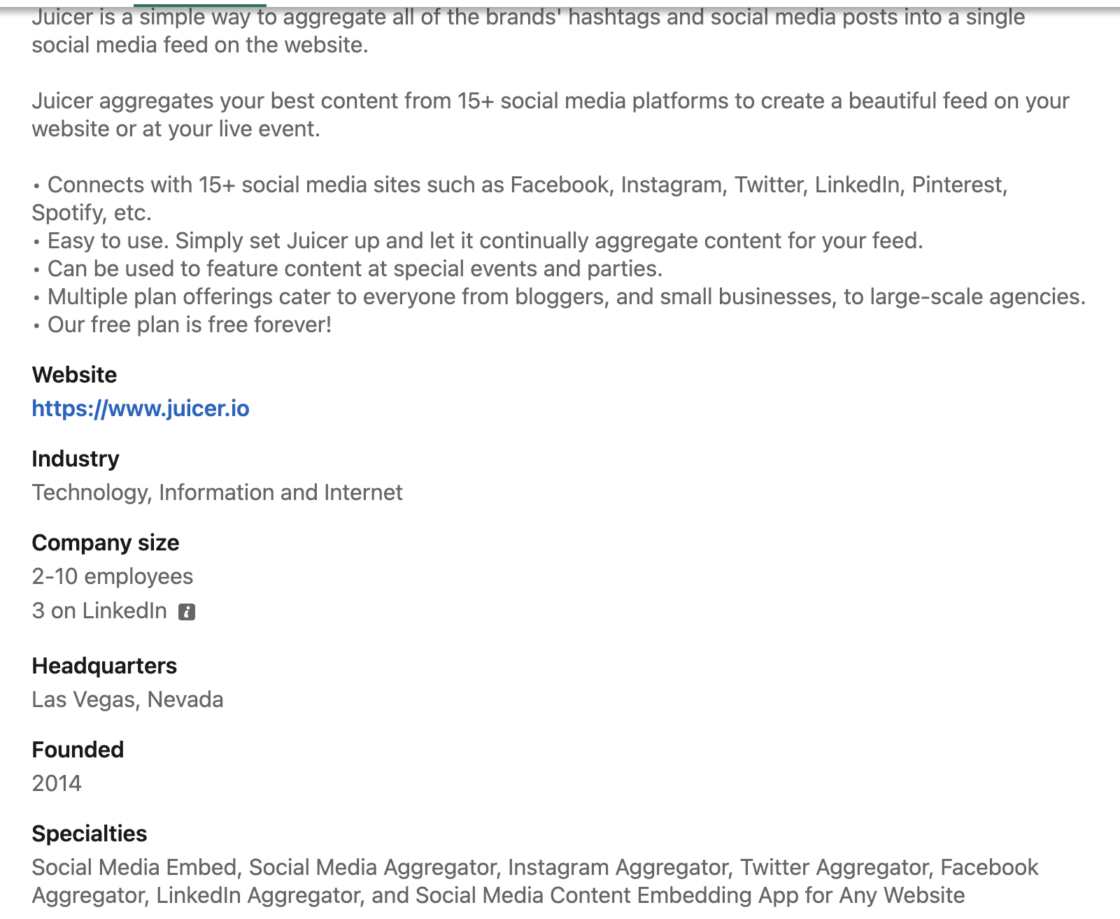
2. Share Content Consistently to Increase Company Page Visibility
No one has the exact playbook for the LinkedIn algorithm. But one thing is certain: LinkedIn, like every other social networking channel, rewards consistent creators. The algorithm is more likely to amplify content from regular accounts than from lurkers.
You also need consistency to build a loyal follower base. As your target audience views and engages with your posts, they’ll familiarize themselves with your brand and gradually start to trust you.
There’s no hack to consistency. You have to commit to sharing content on a predetermined schedule. The best way to achieve this is to plan and schedule your content ahead of time. For example, you can create a monthly LinkedIn content calendar and pre-schedule your content with social tools like Buffer and Later.
3. Engage With the Platform
Imagine that you went to dinner with a friend, and they kept talking the whole time without letting you say a word — that would be a terrible dining experience. This is how your audience feels when you only post content on LinkedIn without engaging the platform as a whole.
Take some time to react, share, and comment on others’ posts on LinkedIn. Respond to tags and questions from other users — that’s how you build a strong brand presence. Also, when your audience sees that you’re willing to amplify your content, they’ll be more than happy to return the favor and share your posts with the people in their network.
For example, see how Buffer responds to most of the comments on its LinkedIn poll.
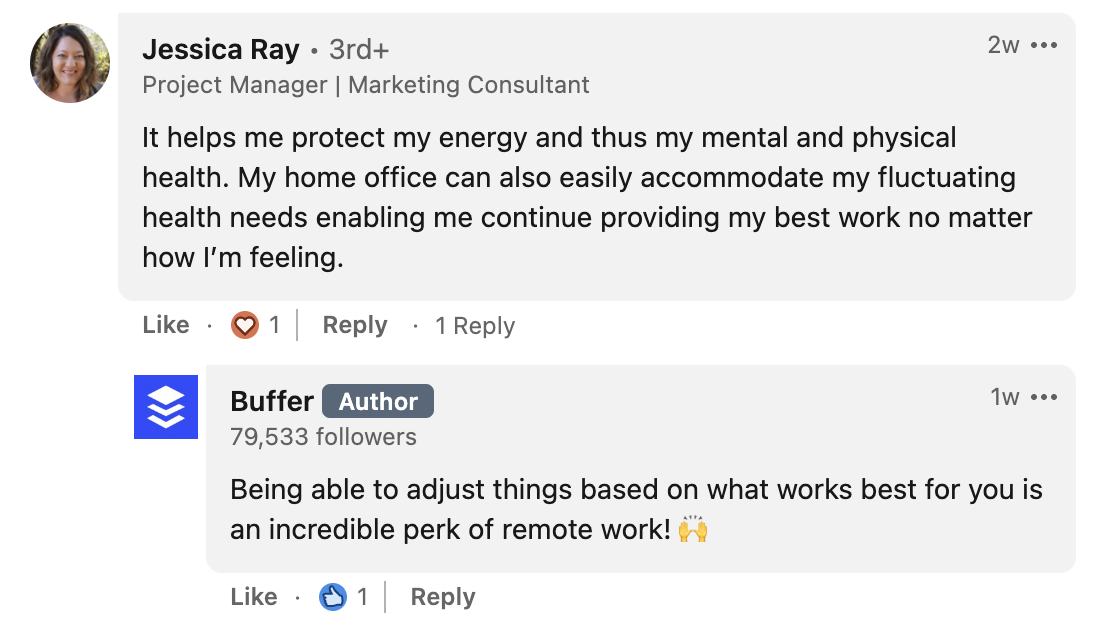
4. Encourage Your Employees to Engage With the Platform
Your employees are in a better position to reach and engage with more people than your brand account is. On average, they have about 10 times as many connections as the number of followers on your company’s LinkedIn page. Say your brand page has 10,000 followers; a single employee can have up to 100,000 connections. That’s a goldmine of opportunities for your brand.
So, how do you tap into your employees’ LinkedIn network? You need to implement an employee advocacy program. An employee advocacy program is a way to encourage your employees to become brand advocates on their personal social media platforms including LinkedIn.
You can do this by creating templates for them to share branded content, amplifying their content that talks about your brand, and encouraging them to share their experiences and perspectives on your organization on LinkedIn.
Here’s a great example of employee advocacy from Prerender.
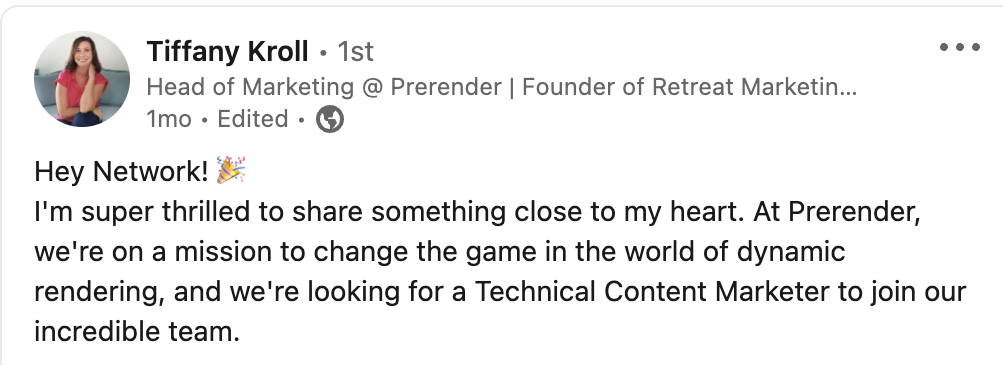
5. Conduct Regular Audits
Page audits help you discover which LinkedIn strategies are working and what you need to discard or improve on. You can do this as part of your company’s quarterly reviews.
Here are a few things to pay attention to during the audit:
Profile information: start by checking your company’s name, logo, banner image, and contact information. Ensure that these elements are accurate and up-to-date. Also, make sure your LinkedIn profile URL is customized to your company’s name. A custom URL looks more professional and is easier to share.
Company description: review your company’s ‘About Us’ section. Ensure it provides a concise and compelling description of your business, its mission, and its products or services. Use relevant keywords: Incorporate relevant keywords in your description to improve discoverability in LinkedIn and external search engines.
Showcase pages: if your company has multiple divisions, consider creating Showcase Pages for each one. Audit these pages individually to ensure they accurately represent their respective segments.
Content strategy: analyze your recent posts, articles, and updates. Ensure that your content is engaging, relevant to your target audience, and aligns with your company’s branding and
Follower engagement: look at the number of followers, likes, comments, and shares on your posts. Identify which content performs best and adapt your strategy accordingly. Also, review your connections to ensure they align with your business goals. Remove inactive or irrelevant connections to maintain a more meaningful network.
Recommendations and endorsements: review and give recommendations. Provide recommendations for current and former employees, clients, and partners. Encourage others to endorse your skills and your company’s services.
Compliance and security: ensure your profile is secure. Review the security settings of your LinkedIn account to prevent unauthorized access or suspicious activity.
Examples of Companies Doing Great on LinkedIn
Let’s look at three companies that are killing the LinkedIn game to inspire you.
1. saas.group
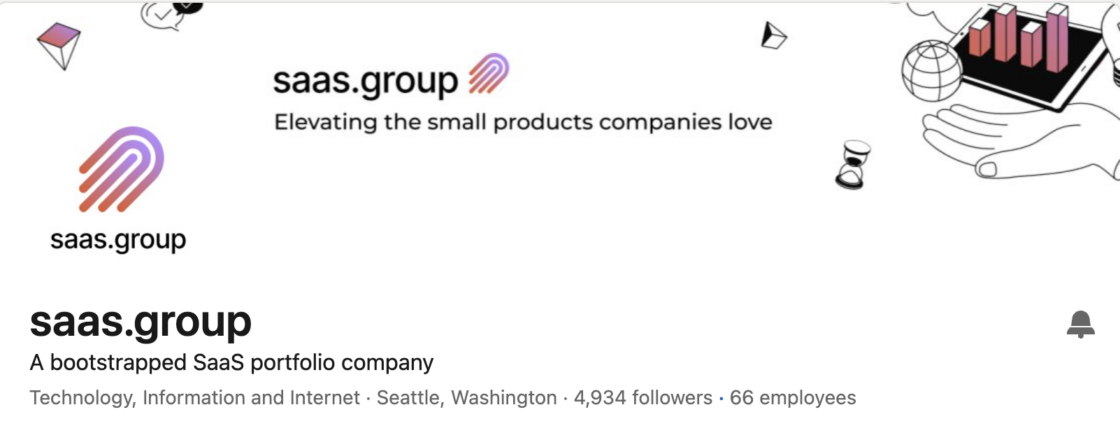
saas.group acquires and scales product-led subscription businesses.
The company fully utilizes LinkedIn’s features to engage with its audience. It shares educational videos and articles, hosts events on the platform, and repurposes content into new pieces for its LinkedIn audience. It also reposts and comments on content from its audience to improve overall engagement.
2. Beekast
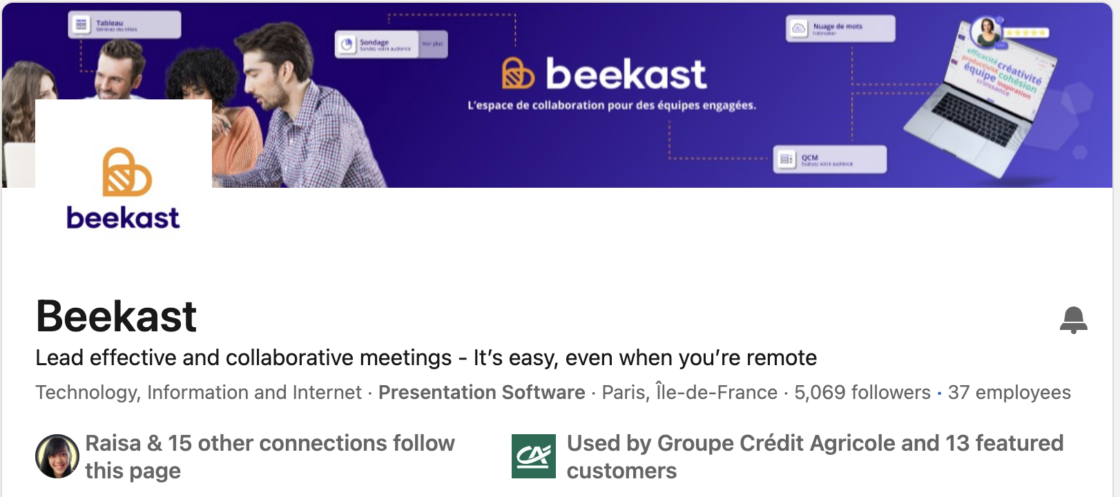
Beekast helps companies organize and track collaborative meetings effectively.
On its LinkedIn page, it features some of its customers for social proof. This is a great way to build up trust and pique first-timers’ interest in the product. It also uses polls to gather direct feedback and engage with the audience.
3. Rewardful
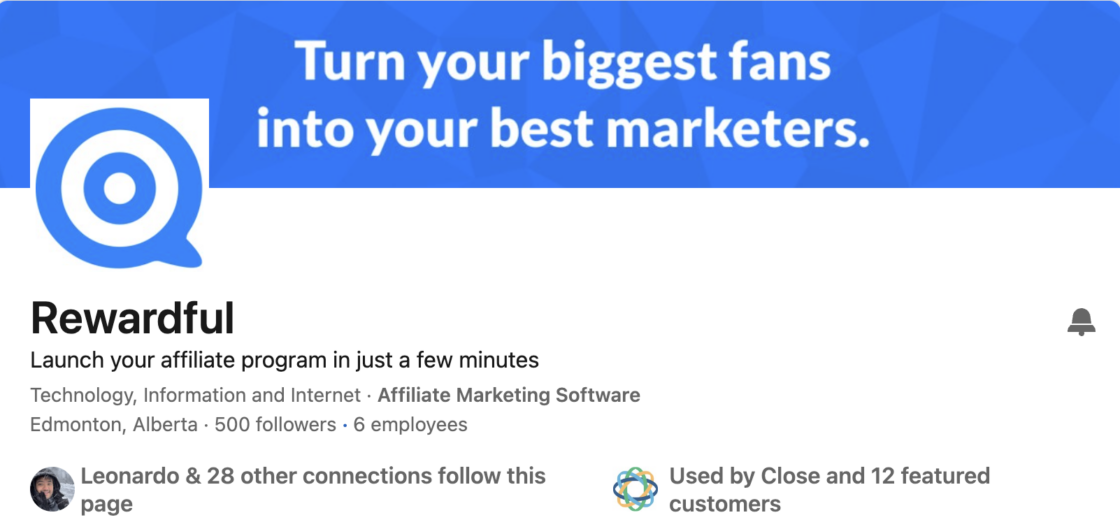
Rewardful is an affiliate marketing software that helps companies launch successful affiliate marketing campaigns.
Rewardful’s CEO, Emmet Gibney, reshares content from the company’s LinkedIn page regularly. He also creates original posts discussing the company’s features, products, and milestones. This is a practical example of employee advocacy.
Create Off-Platform Visibility With a LinkedIn Embed Tool
Juicer helps you amplify your LinkedIn content and get more eyes on it. All you have to do is embed your company’s LinkedIn feed on your business website.
Now, when someone visits your website, they can see all of the awesome stuff your organization is doing on LinkedIn. Sign up for Juicer to see how it works firsthand.
Enjoyed reading this? Check out our other resources to help you grow your LinkedIn page.
